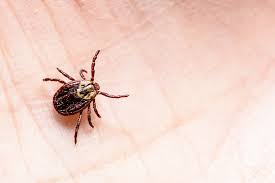
Lyme disease has been a growing cause for concern in the United States, but it’s a disease that is not understood by many. This should not be the case especially for people who love the outdoors.
With summer fast approaching it is a good time to learn about this disease. It has an interesting history and is often easily prevented by following a few simple tips.
If you have become aware of Lyme disease or even if this is the first time you’ve heard of it then read on. You’re about to learn some important information about the history of Lyme disease and how to prevent it.
The history of Lyme Disease
In the 1970s, some children and adults in Lyme, Connecticut started to exhibit some strange symptoms, including:
- skin rashes
- headaches
- intense fatigue
- swollen knees
- paralysis
As you can see the symptoms ranged from mild to severe. In Lyme, visits to the doctor and hospitalization became the order of the day. For years the mystery behind the disease puzzled doctors.
However, two mothers never gave up they began to ask sufferers questions. They did research and contacted scientists. This garnered the interest of people in the medical field who began to ask pertinent questions.
This questioning led them to find out that all the patients had one thing in common they had been bitten by a tick. However, it wasn’t unit the 1980s that a scientist named Willy Burgdorfer was able to identify the bacterium that caused the disease.
Many scientific discoveries happened after that and doctors began using various antibiotics to treat the disease.
How to prevent Lyme Disease
You now know the history of the disease and that tick bites cause it. You also need to know how you can prevent it.
The first thing you should be aware of is that ticks can be lurking in the bushes. This is why you should walk in the middle of a trail and avoid walking through tall vegetation.
You can also use insect repellants that contain DEET to repel ticks when you are outdoors. You should avoid getting the repellent in your eyes and mouth.
While it is important to treat the skin you should also spray repellent on your clothing as well. If you’re out camping spray your tent too. You can also use Lyme coinfections that are made from herbs to help you repel ticks.
When you come in from the outdoors you should check your body for ticks. Common places that ticks like to hide are under your armpits, behind your knees, in your hair, between your legs, and even in your belly button. Remove any ticks that have attached to your skin with tweezers.
Enjoy the outdoors
As the seasons change and it becomes easier to be outside, you may want to start hiking and camping outdoors. This is usually a fun way to enjoy nature. However, you should bear in mind that you will need to avoid getting tick bites.
The biggest thing you can do is to be alert to your surroundings and use repellents. Your knowledge of the history of Lyme disease and how to prevent it will help you.



Be First to Comment